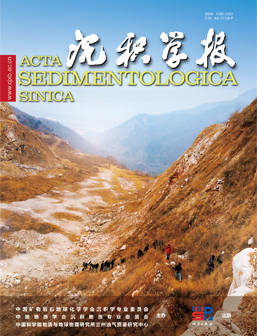Spatial Variation Characteristics of Surface Sediments in Otindag Sandy Land and its Environmental Significance
doi: 10.14027/j.issn.1000-0550.2024.070
- Received Date: 2024-03-23
- Available Online: 2024-07-16
-
Key words:
- Otindag Sandy Land /
- Color /
- Hm/Gt /
- Magnetic susceptibility /
- Surface deposition
Abstract: [Objective] It is of great significance to study the relationship between climate proxies and climate factors in sandy surface sediments to determine the reliability and applicability of climate proxies. [Methods] In this paper, 32 surface sediments were collected on a large spatial scale in Otindag Sandy Land. Through the correlation analysis of chroma, Hm/Gt, magnetic susceptibility and modern climate factors (average annual precipitation and average annual temperature), the relationship between each index and climate factors and their environmental significance were discussed. [Results]The results show that the variation range of a* and b* is small, and the overall trend from east to west is increasing, in which the minimum value of a* is 3.87, the maximum value is 8.26, and the average value is 6.09. The minimum value of b* is 9.49, the maximum is 17.44, and the average is 14.24. a* and b* were negatively correlated with precipitation (correlation coefficients -0.88 and -0.77, P < 0.01), and positively correlated with temperature (correlation coefficients 0.89 and 0.82, P<0.01), indicating that both a* and b* could be used as effective proxy indicators of climate change. And a* is more sensitive to climate factors. The variation range of L* was small, and there was no obvious change rule from the east to the west. The maximum value was 59.54, the minimum value was 48.8, and the average value was 54.69. The relationship between L* and climate factors is not obvious, and its change is mainly directly affected by vegetation, and its indicative significance for climate is not obvious. The relative percentage content of hematite is between 8% and 19%, with an average of 14%, and the relative percentage content of goethite is between 6% and 9%, with an average of 7%. The value of hematite/goethite (Hm/Gt) ranged from 1.2 to 2.73, with an average value of 1.88, showing an increasing trend from east to west. The correlation between hematite and climate factors is higher than that of goethite. The ratio of Hm/Gt is negatively correlated with average annual precipitation (correlation coefficient is -0.85, P<0.01), and positively correlated with average annual temperature (correlation coefficient is 0.84, P<0.01), which reveals the sensitivity of hematite and Hm/Gt to precipitation and temperature. It can effectively reflect the changes of hydrothermal conditions in sandy land. The variation direction of low frequency magnetic susceptibility (χlf) and high frequency magnetic susceptibility (χhf) was the same, showing an increasing trend from the east to the west, and the variation amplitude was small in the east, but larger in the west, and the frequency magnetic susceptibility showed a decreasing trend from the east to the west. The magnetic susceptibility in this region does not show a good correspondence with climate factors. The source of sand material may be the main factor of its variation, indicating the complexity and particularity of the variation of magnetic susceptibility in sand.[Conclusions]Both a* and b* can be used as effective proxy indicators of climate in the study area, while L* is affected by vegetation, which leads to the ambiguity of its climate information. The correlation between hematite and Hm/Gt values and climatic parameters is good, which is an ideal index to indicate the change of water and heat in the sandy land. The magnetic susceptibility of the surface layer of the sandy land is less affected by the climate, and the more reaction is the complexity of the source information in the region.
| Citation: | Spatial Variation Characteristics of Surface Sediments in Otindag Sandy Land and its Environmental Significance[J]. Acta Sedimentologica Sinica. doi: 10.14027/j.issn.1000-0550.2024.070 |






 DownLoad:
DownLoad: